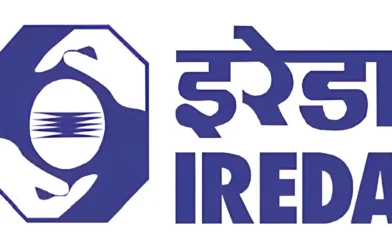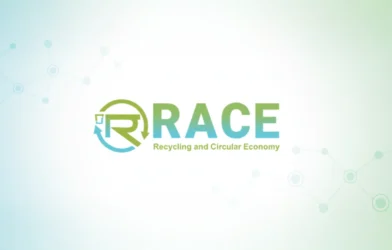In recent years, India has escalated its ambition to confront environmental degradation, pivoting from piecemeal efforts toward a more systemic, integrated sustainability agenda. As one of the world’s fastest-growing large economies, it faces the twin challenges of plastic waste and energy transition — yet the nation is working toward turning these into opportunities for green growth, resilience, and inclusive development. At the heart of this transformation lies the vision of building a Green India.
Tackling the Plastic Menace: From Ban to Lifecycle Accountability
India currently produces roughly 9.3 million tonnes of plastic waste annually, making it one of the major contributors globally. For decades, much of this waste wound up untreated in landfills, drains, rivers, or the ocean — compounding environmental damage, harming ecosystems and public health. If the goal of a Green India is to be realized, tackling plastics must remain a top priority.
In response, the government rolled out a phased ban in 2022 on certain single-use plastic items. But bans alone are not sufficient: under its regulatory framework, India is emphasizing Extended Producer Responsibility (EPR), which holds producers accountable for the full lifecycle of their plastic products. This shift places accountability on businesses and strengthens the foundation of a circular economy — essential for a Green India.
Several municipalities have already shown that transformation is possible. Indore and Ambikapur, for example, have pioneered decentralized waste management strategies with citizen participation and material recovery facilities. These models, if scaled nationally, can serve as pillars of a Green India where waste is viewed not as garbage but as a resource.
To complement regulation, India is promoting biodegradable alternatives and circular business models. Such innovation will reduce dependence on imports and create green entrepreneurship, further fueling the dream of a Green India powered by sustainable industries.
Energizing the Transition: Renewables, Storage & the Blue Economy
India’s energy ambition is equally bold. Of the country’s total installed power capacity, about 46.3% is already derived from non-fossil sources, marking a strong step toward climate goals and the broader vision of a Green India. Solar power parks, rooftop systems, and wind farms are rapidly expanding, while battery storage projects are strengthening grid resilience.
Still, challenges remain. Transmission infrastructure, demand fluctuations, and intermittency require careful management. Smart dispatch systems, demand response, and storage innovation are central to sustaining renewable growth and achieving a Green India that is both resilient and reliable.
Beyond land, India is turning to its coasts through the Ocean Energy Mission, which explores tidal and offshore wind potential along more than 11,000 km of shoreline. If harnessed effectively, this resource could not only diversify energy but also strengthen the foundations of a Green India rooted in blue economy investments.
High-emitting sectors like cement and steel are also testing carbon capture, utilization, and storage (CCUS) technologies. Scaling these solutions is critical if a Green India is to balance industrial growth with environmental responsibility.
Financing the Green Leap: Carbon Markets, Flagship Missions & Policy Integration
Transforming ambition into reality requires finance. India is now building a Carbon Credit Trading Scheme (CCTS) that will allow projects to monetize emission reductions. Such mechanisms attract private investment and fuel the technologies needed for a Green India.
Flagship programs also contribute to this mission. The International Solar Alliance, the National Clean Air Programme, Jal Jeevan Mission, Swachh Bharat Mission, and Namami Gange all integrate sustainability into infrastructure, water, air, sanitation, and energy. Together, they reflect India’s determination to embed sustainability into every aspect of life, turning the dream of a Green India into a structured policy framework.
Challenges & Imperatives: From Policy to Practice
Yet, the road to a Green India is not without hurdles. Institutional coordination is complex, finance gaps persist, and many technologies remain expensive or untested at scale. Citizens and businesses must adopt sustainable behaviors, or else even the best infrastructure will fall short.
Equally important, climate justice must remain central. A Green India cannot exclude its marginalized populations; instead, growth must be inclusive, ensuring rural and urban communities alike benefit from cleaner air, safer water, and green jobs.
The Path Forward: Building an Enduring Green Legacy
India’s sustainability journey is long-term. To achieve the vision of a Green India, strategies must evolve through:
-
- Scaling successful pilots like Indore’s waste model to other regions.
-
- Stable policies that give investors confidence.
-
- Innovation ecosystems fostering startups and research in biodegradable materials, storage, and recycling.
-
- Carbon markets and finance that make sustainability profitable.
-
- Inclusive programs that link climate goals with livelihoods, water, and health.
Ultimately, sustainability is not just compliance — it is a driver of India’s next growth story. A Green India will be defined by reduced plastic waste, clean energy, circular economies, and resilient communities. By turning challenges into opportunities, India is laying the foundation for a cleaner, stronger, and more equitable future. And in doing so, it can inspire other developing nations to pursue their own paths toward a greener tomorrow.
Disclaimer: This article is based on information available from public sources. It has not been reported by EQMint journalists. EQMint has compiled and presented the content for informational purposes only and does not guarantee its accuracy or completeness. Readers are advised to verify details independently before relying on them.








